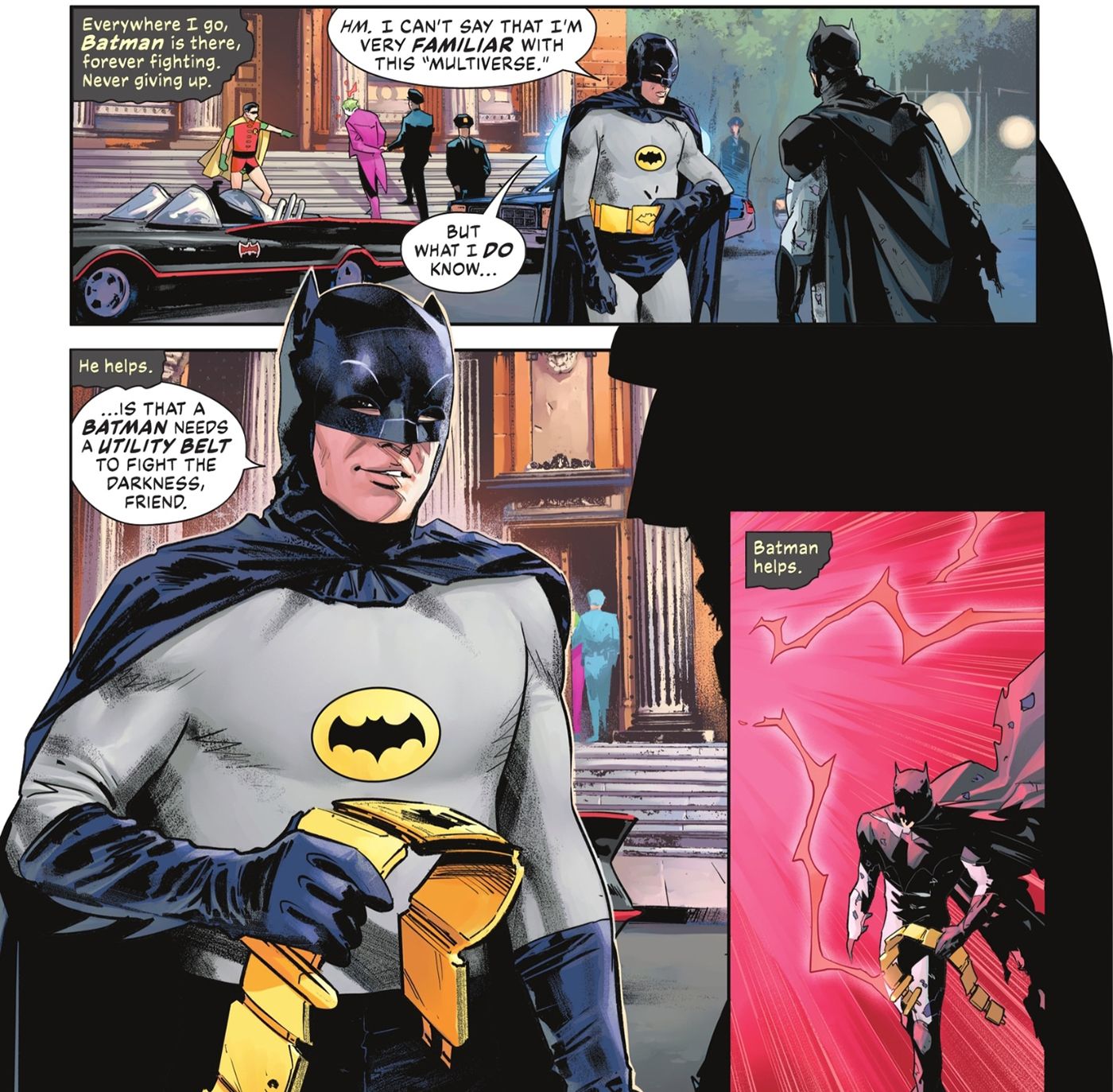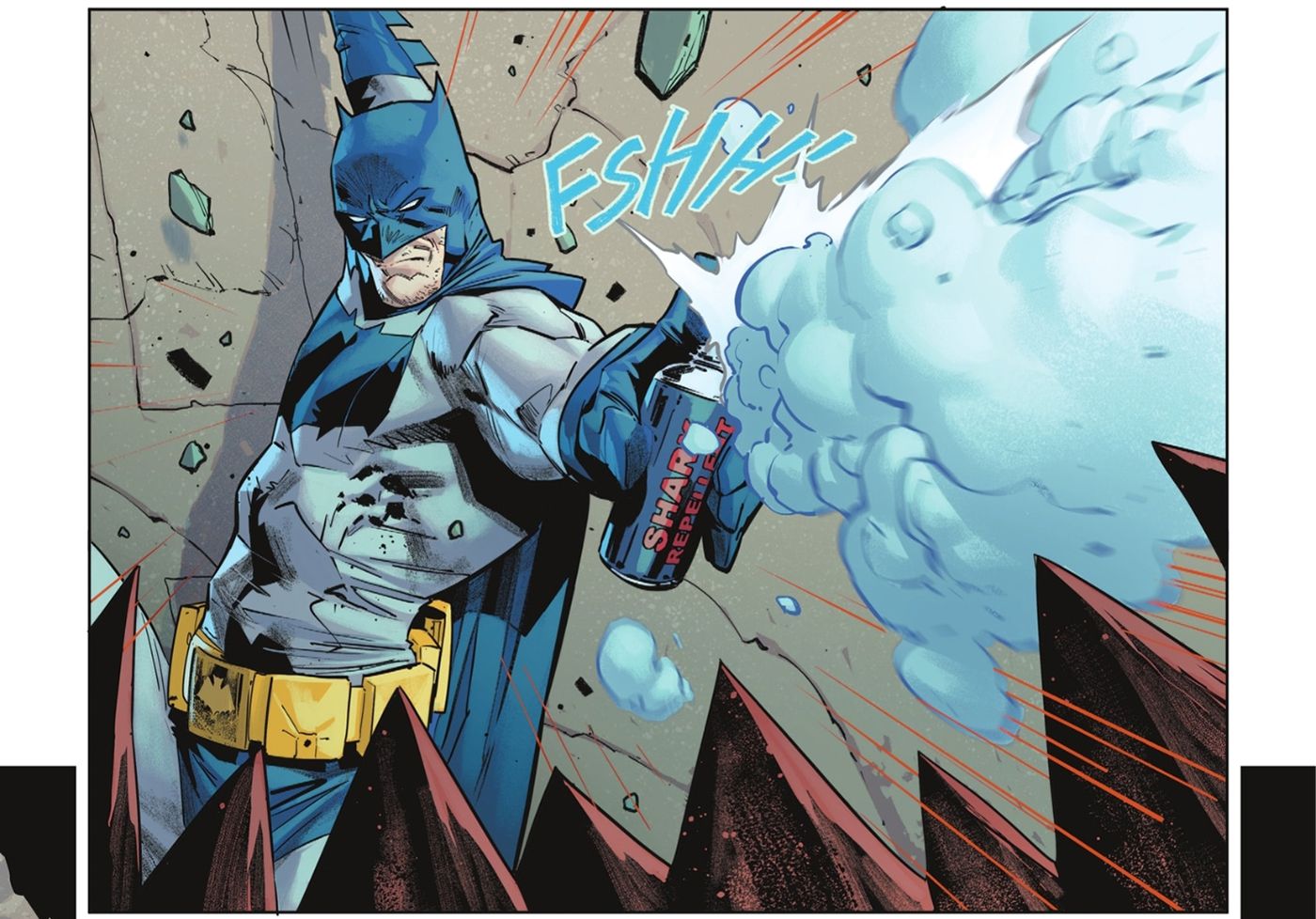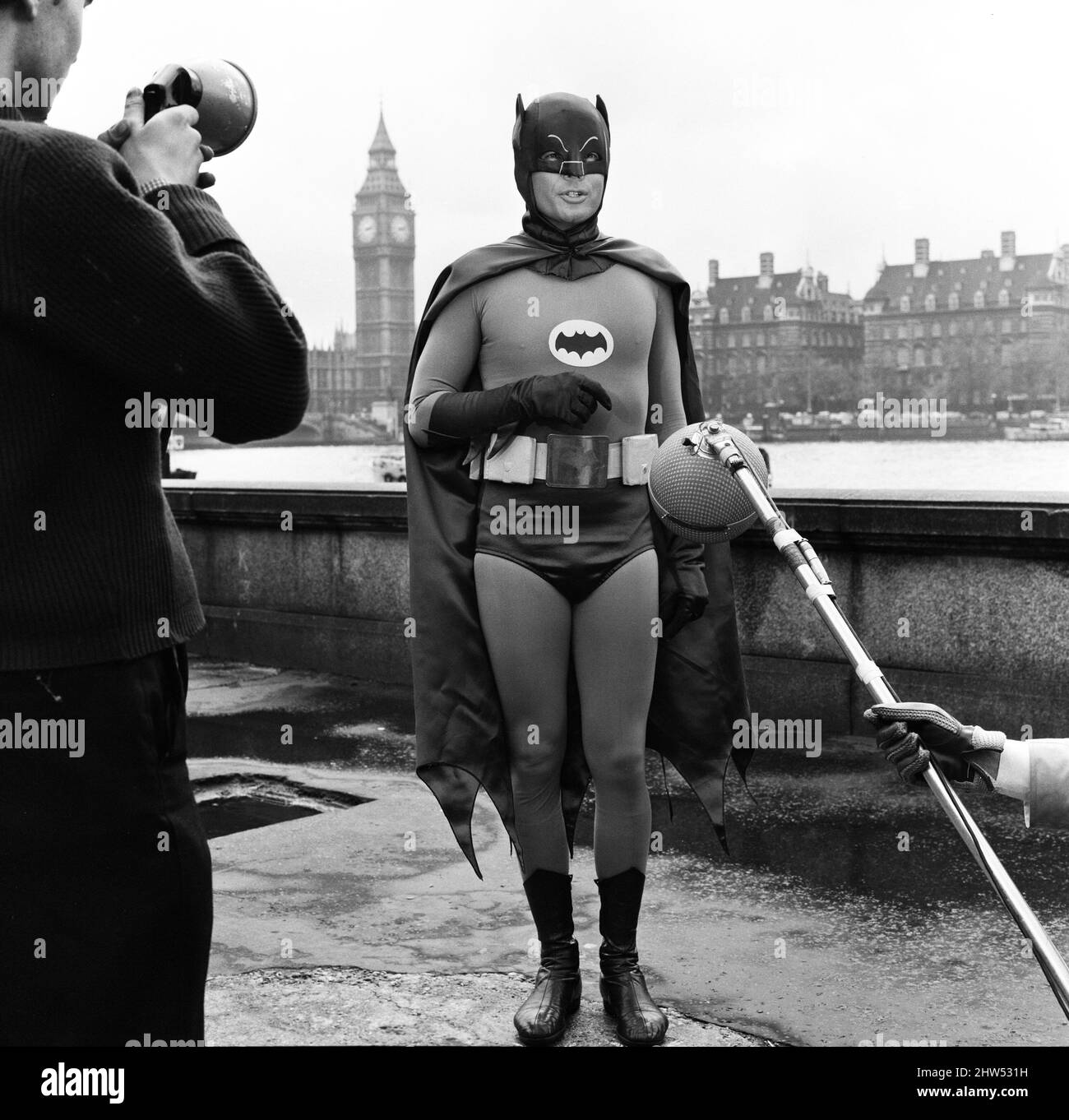Adam West's Batman Costume: A Look Back At The Iconic 1966 Suit
When you think about the caped crusader, a certain image probably pops into your head, and for many, that image is Adam West as Batman. His portrayal, very much a part of the 1966 television series, brought a unique charm and a splash of color to the character. It’s a look that, in a way, just sticks with you, isn't it? That bright, almost playful outfit was a huge part of what made his Batman so memorable, really setting a tone for an entire generation of fans.
This particular suit, with its distinct design choices, actually stood out quite a bit from previous interpretations of the character. It wasn't dark or brooding, like some later versions. Instead, it was vibrant, sometimes even a little bit campy, which, you know, was totally intentional for the show's style. It perfectly captured the era's spirit, a time when television was exploring new kinds of heroes.
So, we're going to take a closer look at what made Adam West's Batman costume so special. We'll explore the choices behind its creation, talk about its impact on pop culture, and see why, even today, people still love this classic outfit. It’s a fascinating piece of costume history, and, you know, it just has this enduring appeal.
- Princess Love And Ray J Wedding
- Duck And Sheep
- Nick Saban Grandchildren Ages
- Construction Hoarding
- Alan Singleton
Table of Contents
- Adam West: The Man Behind the Mask
- The Genesis of an Icon: Designing Adam West's Batman Costume
- More Than Just Fabric: The Costume's Cultural Impact
- The Costume's Enduring Appeal Today
- Frequently Asked Questions
- Conclusion
Adam West: The Man Behind the Mask
Before we truly get into the threads and details of the suit, it’s worth spending a moment on the person who brought it to life. Adam West, born William West Anderson, was an actor whose career spanned many decades, but he's, you know, undoubtedly most celebrated for his role as Batman. His unique delivery and deadpan humor were absolutely central to the show's charm, and they really made the character his own. He had this way of making even the most outlandish situations seem completely normal, which, honestly, was a big part of the fun.
He wasn't just an actor playing a part; he became, in many people's minds, the definitive Batman for a long time. His performance, paired with that instantly recognizable costume, created an image that still resonates with people today. It’s quite something to think about, how one role can shape an entire career and leave such a lasting impression on popular culture, isn't it? He truly embraced the character, and that, arguably, shone through in every scene.
Personal Details and Bio Data
| Full Name | William West Anderson |
| Known As | Adam West |
| Born | September 19, 1928 |
| Died | June 9, 2017 |
| Nationality | American |
| Occupation | Actor, Voice Actor |
| Most Famous Role | Batman in the 1966 TV series |
The Genesis of an Icon: Designing Adam West's Batman Costume
The creation of Adam West's Batman costume was, in a way, a fascinating process, deeply rooted in the artistic sensibilities of the mid-1960s. The show’s producers and designers weren't aiming for realism, not really. They were going for something bright, something bold, something that would pop on television screens, which, you know, were still mostly black and white for many viewers at the time. This meant that color choices and overall design had to be very deliberate, perhaps more so than we might realize today.
The goal was to make Batman look heroic, but also approachable, even a little bit friendly, which was a departure from some of the character’s darker comic book roots. This approach, actually, helped the show appeal to a very broad audience, from young children to adults. It’s a good example of how costume design can truly shape a character's public persona, and, as a matter of fact, it did so quite effectively here.
The Distinctive Look: Colors and Cowl
The color palette of Adam West's Batman costume is, arguably, one of its most defining features. Instead of a stark black or dark grey, the suit featured a vibrant blue cowl, cape, and gloves, paired with a grey bodysuit. This combination was a conscious choice, designed to ensure visibility and contrast on older television sets. The blue, in particular, was a very strategic color, meant to stand out against the backgrounds and give the character a dynamic presence on screen. It really made him pop, so to speak.
The cowl itself was also quite distinctive. It had a very clean, somewhat rounded shape, with short, pointed ears. The bat symbol on his chest, a yellow oval with a black bat, was another key element. This specific emblem became synonymous with the 1966 series and, you know, is still instantly recognizable to fans everywhere. It’s a design that, in some respects, has transcended the show itself, becoming a symbol of a particular era of superhero storytelling.
The utility belt, too, was a bright yellow, loaded with various gadgets. This wasn't just a prop; it was a character in itself, always ready to dispense a Batarang or Bat-spray. Its bright color added another layer to the costume's overall cheerful aesthetic, and, as a matter of fact, it was often a source of humor on the show. Everything about the costume, from the colors to the details, was clearly thought out to align with the show's unique tone.
Material Choices and Practicality
When it came to the materials for Adam West's Batman costume, practicality was, you know, a pretty big consideration. The suit needed to allow for movement, for those signature Batusi dance moves, and for all the action sequences, even if they were often played for laughs. The grey bodysuit was typically made from a relatively flexible fabric, perhaps a wool or a blend, allowing Adam West to perform his stunts and comedic bits without too much restriction. This was, honestly, quite important for the show's physical comedy.
The cowl and cape were often made from a satin-like material, which gave them a nice sheen under the studio lights. The cape, in particular, had a dramatic flair, billowing behind him as he ran or swung. It wasn't just about looking good; it was about moving well and creating a visual spectacle. The gloves and boots were generally made of a similar blue material, completing the cohesive look. It’s interesting to think about how these material choices, seemingly simple, contributed so much to the character's overall presentation, and, in fact, to the show’s enduring appeal.
Maintaining the costume, too, was a continuous effort. With the rigors of filming, multiple versions of the suit were likely needed, and they would have required regular cleaning and repair. The bright colors, you know, would have shown dirt and wear quite easily, so keeping them fresh was probably a constant task for the wardrobe department. It's a reminder that even iconic costumes have very practical, everyday challenges behind their glamorous appearance, and, arguably, that's part of their story too.
More Than Just Fabric: The Costume's Cultural Impact
Adam West's Batman costume was far more than just a collection of fabric and accessories; it was, you know, a cultural phenomenon. It became an instant icon, instantly recognizable to millions, and it truly shaped how a generation perceived the caped crusader. Its bright, almost cheerful aesthetic was a stark contrast to some of the darker portrayals that would come later, and that contrast, actually, is part of what makes it so enduringly fascinating. It really cemented a particular vision of Batman in the public consciousness.
The show itself, with its "Pow!" and "Wham!" on-screen sound effects, was a huge hit, and the costume was central to that visual identity. It wasn't just a costume; it was a character in its own right, a symbol of the show's unique blend of action, comedy, and vibrant pop art. It truly embodied the spirit of the 1960s, a time of bold colors and playful experimentation, and, as a matter of fact, it still feels very much of that era.
Shaping Batman's Image
For many people, especially those who grew up in the 1960s and 70s, Adam West's Batman costume was, you know, their very first introduction to the character. This meant that the bright blue and grey, the yellow utility belt, and the distinctive cowl became the default image of Batman in their minds. This initial impression, actually, had a profound effect on how the character was understood by a broad audience, far beyond just comic book readers. It made Batman accessible and fun, which was a big deal at the time.
Even as later interpretations of Batman took on a darker, grittier tone, the image of Adam West's suit persisted. It became a benchmark, a point of reference for comparison, and a reminder of a different era for the hero. It's almost as if, no matter how serious Batman gets, there's always a little bit of that playful, colorful spirit lingering in the background, thanks in large part to this costume. It just goes to show how powerful a visual can be in shaping a cultural icon, and, arguably, this one did it exceptionally well.
Its Legacy in Pop Culture
The legacy of Adam West's Batman costume is, you know, incredibly rich and varied. It pops up in countless homages, parodies, and references across popular culture. From animated shows to video games, the bright blue and grey suit, along with its yellow accessories, is instantly recognizable as a nod to the 1966 series. It’s a shorthand for a specific kind of Batman, one that’s a bit more lighthearted and, frankly, a lot more fun.
The costume has also influenced subsequent Batman designs, even if subtly. Elements like the distinct bat symbol or the general silhouette can sometimes be seen reimagined in modern takes, showing its enduring design strength. It’s a testament to its timeless appeal that, even decades later, it continues to inspire artists and creators. This suit, in a way, is a permanent fixture in the superhero pantheon, and, as a matter of fact, its influence stretches further than many might imagine.
It’s not just about the look, though. The costume is intertwined with the show's campy humor and moral lessons, making it a symbol of a particular storytelling style. When you see that costume, you almost hear the "Biff! Bang! Pow!" sound effects and Adam West's distinctive voice. It’s a complete package, really, that evokes a strong sense of nostalgia for many. You can learn more about the history of Batman's various looks on our site, and it’s fascinating to see how they've evolved over time.
The Costume's Enduring Appeal Today
Even now, many years after the original show aired, Adam West's Batman costume continues to captivate audiences. It’s not just a relic of the past; it’s, you know, a living, breathing piece of pop culture history that still holds a special place in people's hearts. Its bright colors and distinct style stand out in a world often dominated by darker, grittier superhero portrayals, offering a refreshing contrast. It’s almost like a breath of fresh air for those who appreciate a different kind of hero.
The costume’s appeal is multi-faceted. For some, it’s pure nostalgia, a reminder of childhood and simpler times. For others, it’s an appreciation for its unique artistic merit and its place in television history. It represents a period when superheroes were perhaps a bit less complicated, and their adventures were, arguably, more about fun than deep psychological introspection. This simplicity, in a way, is part of its charm.
Why Fans Still Cherish It
Fans cherish Adam West's Batman costume for a variety of reasons, and, you know, many of them are deeply personal. For one, it’s inextricably linked to Adam West himself, whose portrayal was so beloved. His unique blend of earnestness and humor made the character approachable, and the costume was a big part of that. It felt like a hero you could actually root for, someone who was serious about fighting crime but also, basically, a bit of a good sport.
There's also the sheer visual appeal. The bright colors and clean lines are just plain appealing, even today. It’s a costume that makes you smile, perhaps, rather than ponder. It represents a time when superhero stories were, in some respects, more about escapism and less about realism. This kind of lightheartedness, actually, is something many people still seek out in their entertainment. It just has this timeless quality that resonates with different generations.
Furthermore, the costume symbolizes a foundational moment for Batman in live-action media. Before the 1966 show, Batman was primarily a comic book character. This series, and this specific costume, brought him to a massive, mainstream audience for the very first time. That historical significance, you know, adds another layer to its enduring value. It’s a costume that, in a way, helped define a hero for millions, and that's pretty remarkable.
Replicas and Homages
The enduring popularity of Adam West's Batman costume is clearly evident in the sheer number of replicas and homages that exist. Fans often create their own versions for cosplay at conventions, meticulously recreating the distinct blue and grey. These costumes aren't just outfits; they're, you know, a way for people to connect with a beloved piece of their past and celebrate a cultural icon. It’s a very visual form of appreciation, really.
Official merchandise, too, frequently features the 1966 costume. Action figures, statues, and various collectibles often depict Batman in his classic blue and grey attire, further cementing its place in popular culture. This continued presence in merchandise shows that the demand for this particular look remains strong, even after all these years. It’s almost like the costume itself has become a brand, separate from the show, and, as a matter of fact, it continues to thrive.
Filmmakers and animators also pay tribute to this iconic design. You'll sometimes see subtle nods or direct references to the 1966 suit in newer Batman productions, serving as a respectful homage to its legacy. These moments, you know, act as a bridge between different generations of Batman fans, acknowledging the character's rich history. It’s a testament to how deeply this costume is woven into the fabric of superhero lore, and, arguably, it will continue to be for a long time. You can find out more about the 1966 Batman TV series and its impact on Wikipedia.
Frequently Asked Questions
What color was Adam West's Batman costume?
Adam West's Batman costume was primarily a combination of grey for the main bodysuit and a vibrant blue for the cowl, cape, gloves, and boots. The utility belt was a bright yellow, and the bat symbol on his chest was a black bat within a yellow oval. This color scheme was, you know, very distinct and made him quite recognizable on television.
Why did Adam West's Batman costume look so different from later versions?
The design of Adam West's Batman costume was heavily influenced by the pop art movement of the 1960s and the need for visual clarity on older television sets. The show itself had a campy, lighthearted tone, which the costume was designed to reflect. Later versions often aimed for a darker, more realistic, or gritty portrayal of Batman, which, you know, naturally led to different costume aesthetics. It was, basically, a product of its time and the show's specific creative vision.
Is Adam West's Batman costume considered iconic?
Yes, absolutely! Adam West's Batman costume is, arguably, one of the most iconic superhero costumes in television history. Its bright colors, distinct design, and association with a beloved portrayal of Batman have cemented its place in popular culture. It's instantly recognizable and continues to be celebrated by fans and artists alike, even today. It just has this timeless appeal, you know.
Conclusion
Adam West's Batman costume, with its bold colors and unique style, remains a truly unforgettable piece of television history. It captured the spirit of an era, brought a beloved hero to a massive audience, and, you know, continues to charm fans across generations. This suit isn't just about how it looked; it's about the feeling it evoked, the fun it represented, and the lasting mark it left on the character of Batman. It truly stands as a vibrant testament to a particular moment in superhero storytelling, and, as a matter of fact, its legacy is still very much alive.
- Biggest Diamond Ring In The World
- How To Use Nail Strengthener
- Helzberg Aquamarine Ring
- Kendall And Kylie Clothes
- Why Did Priscilla Presley Not Like Michael Jackson

Batman's New Costume Has a Major Adam West Influence

Batman's New Costume Has a Major Adam West Influence

Adam West Batman Costume